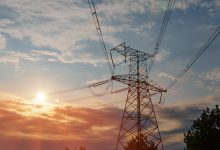The planned CopperString 2.0 high-voltage transmission line set to connect the communities of Mt Isa and the North West Minerals Province to the Australian National Electricity Grid is forecast by its promoters to deliver a return of $4.54 for every $1 invested.
Economic modelling conducted by consulting firm ACIL Allen on the planned CopperString 2.0 project found that its Benefit Cost Ratio (BCR) to be $4.54 – meaning that for every $1 invested in CopperString, the project will deliver $4.54 in benefits for Australia.
“CopperString 2.0 is expected to sustain much higher levels of production and export and therefore deliver exceptionally large economic benefits,” the company says in a press release about the proposed transmission 1,100km transmission link from Mt Isa to near Townsville.
It would be the largest geographic expansion of the National Electricity Market (NEM), supplying electricity to customers across North West Queensland and delivering what the developers hope are opportunities for new industrial facilities and large agricultural and renewable energy projects.
“The significance of this analysis is that CopperString’s BCR of $4.54 highlights the critical importance of the Townsville – NWMP industrial economy to our jobs and national income because this infrastructure compares very favourably to other Australian infrastructure projects,”
It produced this table below to highlight the superior returns of the $1.5 billion project to more than $20 billion of rival infrastructure projects including airports and rail lines.
“It is clear that Queensland’s best bet to repower the economy is backing the North West Minerals Province and Townsville’s industrial manufacturing sector with major infrastructure investment such as CopperString,” said Joseph O’Brien, Director, CuString Pty Ltd, the CopperString 2.0 project proponents.
“By providing access to cheaper and more flexible electricity supply the CopperString transmission line will be a catalyst for the increased production of mineral resources that are not economically feasible and likely to remain in the ground if we do nothing and are stuck with expensive energy.”
Among CopperString’s key benefits identified by ACIL Allen were the efficiency benefits of electricity generation – which were principally associated with lower fuel and variable operating costs per unit of electricity generated – additional electricity generation including increased production of renewable energy sources, reduced carbon emissions, increased mineral production, and increased employment and prosperity across Queensland.
Among the many benefits of CopperString 2.0 is the potential for creating access to huge wind and solar resources in North West Queensland. In a country as vast and spread out as Australia – highlighted especially by the mind-boggling distances that encompass Queensland – there are significant swaths of our country which are virtually unpopulated, but which also boast significant wind and solar resources.
Connecting North West Queensland to the Australian National Electricity Grid would open the door for new renewable energy projects to be built in locations with low populations but abundant in wind and sunshine,
Thankfully, unlike the previous Queensland Government which blocked the development of the original CopperString proposal, the current Queensland Government has understood the potential value of CopperString 2.0. In May, it signed a $14.9 million boost which is set to enable CopperString 2.0 to continue its development activities in preparation for planned construction as soon as 2021.
“The potential wider economic benefits from unlocked private investment are modelled at over 3,500 jobs in North Queensland and $79 billion economic uplift over 30 years,” said Premier Palaszczuk in a statement on Tuesday.
“I just don’t want to see the minerals, cobalt, copper, scandium and vanadium mined in Queensland. I want to see batteries manufactured in Queensland because that means more jobs in the regions.
“This is the type of productive infrastructure that will position Queensland for the next half a century.”
ACIL Allen’s economic analysis of CopperString 2.0 includes an economic impact analysis with a forecast period out to 2050, which shows that the project would yield a $139.4 billion aggregate increase in Queensland’s Gross State Product, a $54.3 billion aggregate increase in Queensland Real Income, and 3,560 full-time equivalent (FTE) jobs sustained on average out to 2050 across North and North-West Queensland.
With all of this in mind, CuString’s O’Brien believes these projected economic benefits only serve to highlight the critical importance of continued support from both the Queensland and Australian Governments.
“CopperString’s common use energy infrastructure can sustain global-competitiveness through lower prices and lower emissions intensity for our minerals and fertiliser manufacturing industries supporting thousands of jobs and adding billions to regional Queensland’s economy for decades to come,” he said.
“Expanding our minerals industry through CopperString is exactly what the Queensland and Australian economies need right now, a catalytic infrastructure project that will help unlock our minerals resources and drive job creation to assist with a strong economic recovery from the global coronavirus pandemic that continues to make prosperity for our country harder and harder.”











